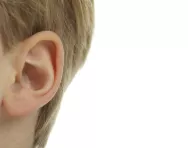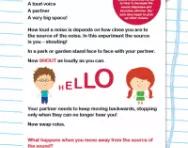Important update from TheSchoolRun
For the past 13 years, TheSchoolRun has been run by a small team of mums working from home, dedicated to providing quality educational resources to primary school parents. Unfortunately, rising supplier costs and falling revenue have made it impossible for us to continue operating, and we’ve had to make the difficult decision to close. The good news: We’ve arranged for another educational provider to take over many of our resources. These will be hosted on a new portal, where the content will be updated and expanded to support your child’s learning.
What this means for subscribers:
- Your subscription is still active, and for now, you can keep using the website as normal — just log in with your usual details to access all our articles and resources*.
- In a few months, all resources will move to the new portal. You’ll continue to have access there until your subscription ends. We’ll send you full details nearer the time.
- As a thank you for your support, we’ll also be sending you 16 primary school eBooks (worth £108.84) to download and keep.
A few changes to be aware of:
- The Learning Journey weekly email has ended, but your child’s plan will still be updated on your dashboard each Monday. Just log in to see the recommended worksheets.
- The 11+ weekly emails have now ended. We sent you all the remaining emails in the series at the end of March — please check your inbox (and spam folder) if you haven’t seen them. You can also follow the full programme here: 11+ Learning Journey.
If you have any questions, please contact us at [email protected]. Thank you for being part of our journey it’s been a privilege to support your family’s learning.
*If you need to reset your password, it will still work as usual. Please check your spam folder if the reset email doesn’t appear in your inbox.
Glue ear: all your questions answered

What is glue ear?
The name is given to the build-up of fluid in the middle ear. The problem can sometimes be caused by a cold or an infection and leads to temporary hearing loss.
Glue ear mainly affects pre-school and primary-school children because the Eustachian tube in the ear is much smaller in youngsters and is tilted at a different angle compared to that of adults, so can easily become blocked. The Eustachian tube normally allows air in and out so that the ear drum and tiny bones in the middle ear vibrate freely, but if it’s blocked, it causes a vacuum and results in the lining of the middle ear becoming inflamed, making fluid seep out. If this persists, the fluid can become thick – like glue – and it prevents the ear drums and bones from being able to vibrate as freely as normal, which causes hearing loss.


Boost your child's maths & English skills!
- Follow a weekly programme
- Maths & English resources
- Keeps your child's learning on track
Children who suffer from allergies such as hayfever and asthma tend to be more likely to fall victim to glue ear.
The winter months of December and January are the peak time for the condition to take hold. Previously, doctors tended to see cases begin in autumn, but global warming has now resulted in milder autumns so viruses and bugs don’t start to hit until later.
What are the symptoms of glue ear?
"Sometimes there may not be any obvious signs at all as glue ear does not always affect hearing, or the hearing loss may be mild or fluctuate," says Gemma Twitchen, senior audiologist at Action on Hearing Loss. Some children may feel pain and younger children may pull at their ears to show there is something wrong, but for some the only symptom is muffled hearing and they may not realise they’ve got a problem in their ear.
It can be difficult for parents and teachers to spot if a child is suffering from glue ear. However, if a child begins to get frustrated and their behaviour dips that can be a sign that they aren’t hearing so well, so too is a slide in grades in school work. It’s worth getting your child's hearing checked if you are concerned.
How is glue ear treated?
The condition can often clear up on its own, but in more severe cases a child can still be suffering from the thick and sticky fluid for up to several weeks and months later.
The first port of call is your GP who will check to see if there is an obvious infection. Antibiotics will sometimes be prescribed. It’s likely your child will be referred for hearing tests to see if there is a hearing loss and what may be causing it. If glue ear appears to be the problem, often a period of ‘watchful waiting’ is followed to see if the condition clears up naturally in three months. In the meantime, ask your child's teacher if they can sit at the front of the class so they can hear moreclearly.
If glue ear hasn't cleared after three months, the child can be referred to an ear, nose and throat specialist. A grommet – a tiny tube-like device – can be inserted surgically into the eardrum to allow air into the middle ear. This improves hearing and helps to clear the fluid and to prevent the return of the infection. The grommet is eventually dispelled from the ear naturally. Sometimes a hearing aid can be fitted temporarily. Only rarely does glue ear lead to permanent damage to the ear.








